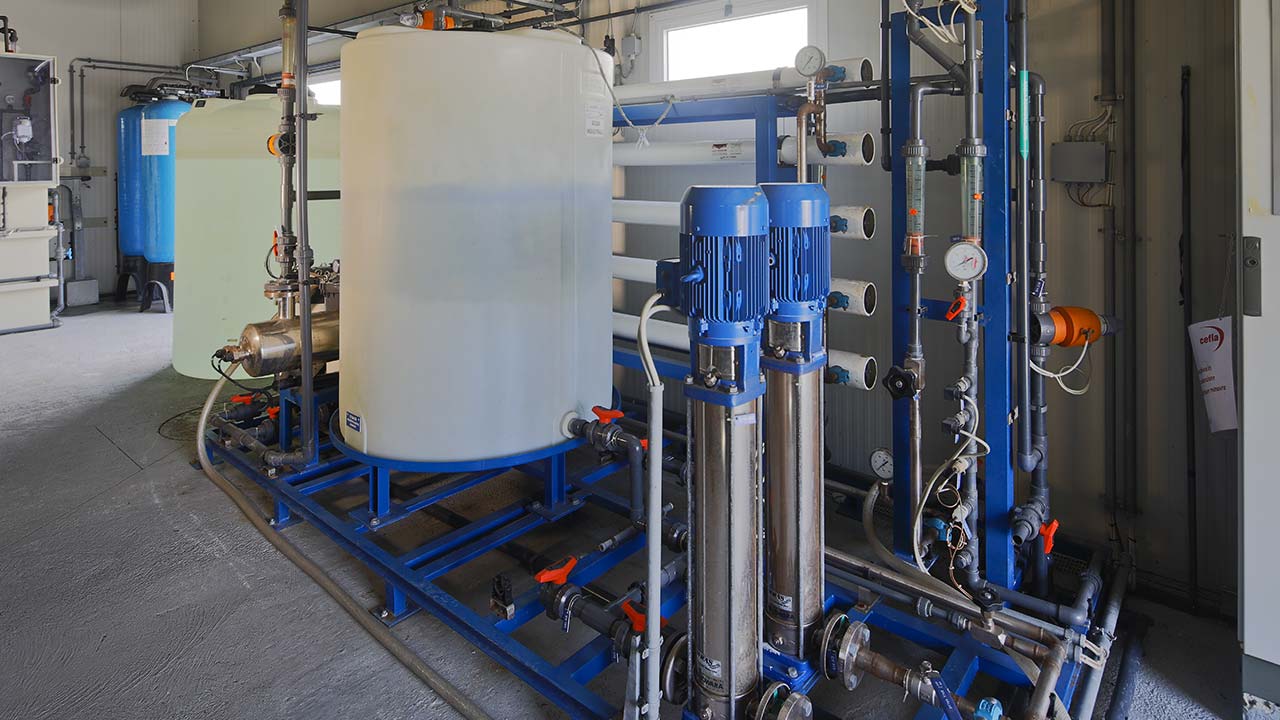
Industrial Reverse Osmosis
L'grating plant acts with a mechanical-physical process to remove organic substances that settle in a liquid.
A water supply source of low quality or with high levels of impurities requires the use of a Reverse Osmosis system, especially in industrial settings where there is a need forhigh water purity.
This type of plant consists of semipermeable membranes, subjected to pressure, to obtain demineralized water, free of salts and impurities.
It is the most advanced of water purification techniques, allowing large amounts of water recovery, even over 95 percent; employing the flow back into the production cycle, including that from wastewater, following appropriate treatment.

To trigger a reverse osmosis process, a pressure greater than the osmotic pressure of the liquid to be treated must be applied.
In theindustrial reverse osmosis plant, semipermeable membranes are in contact with two fluids at different solute concentrations.
By regulating the pressure to which the membranes are subjected, the osmotic process can be acted upon, preventing the passage of the solute and allowing a pure fluid, free of salts and impurities, to be obtained.
This type of process makes it possible to treat primary waters of different origin and salinity, including surface, brackish or sea water.
The chemical characteristics of the incomingwater and the levels to be obtained at the end of treatment affect the design of the plant.
It is often necessary to implement pretreatment upstream of osmosis membranes to avoid overloading them, e.g., ultrafiltration membranes.
Peculiarities of water affecting system design
- provenance
- quantity
- chemical analysis
- end use
The processes that take place during water treatment are precisely monitored so that immediate action can be taken on membrane pressure.
The design of the reverse osmosis plants that Coind makes can also include a second stage of treatment of the concentrate, which can be sent to an evaporator in order to concentrate the flow more. In this way, the volume to be sent for disposal will be less.
